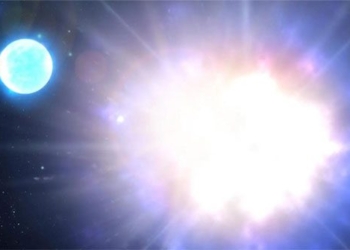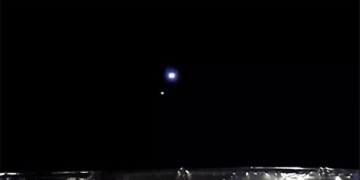In space, astronauts often lose their sense of taste, and food can have a different flavor. So how can they eat well and ensure they get enough energy to maintain their health while working?
When on Earth, astronaut Leland Melvin is known for his love of food. During his two flights to the International Space Station (ISS), he enjoyed his meals quite a bit. He stated, “sometimes you can lose your sense of taste in space, but I didn’t have that issue.”
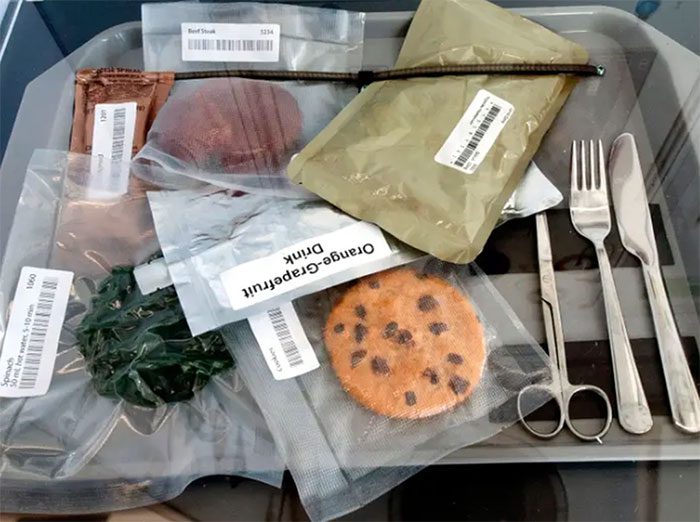
Vacuum-sealed packaged food displayed in NASA’s Moon module (Photo: Jason Connolly/AFP/Getty Images).
The food for astronauts has undergone significant improvements since the early days of human space exploration.
Astronaut Melvin’s meals on the ISS are quite diverse, ranging from oatmeal with brown sugar and orange juice to beef and cheese. The only catch is that everything is pre-packaged in small bags.
Over the years, NASA has invested in enhancing the quality of meals for their astronauts. In his book “Chasing Space,” astronaut Melvin writes that “eating deliciously, healthily, and nutritiously is essential for us to accomplish our assigned missions.”
Therefore, tasty food is incredibly beneficial.
Ensuring Food Safety and Readiness in Space
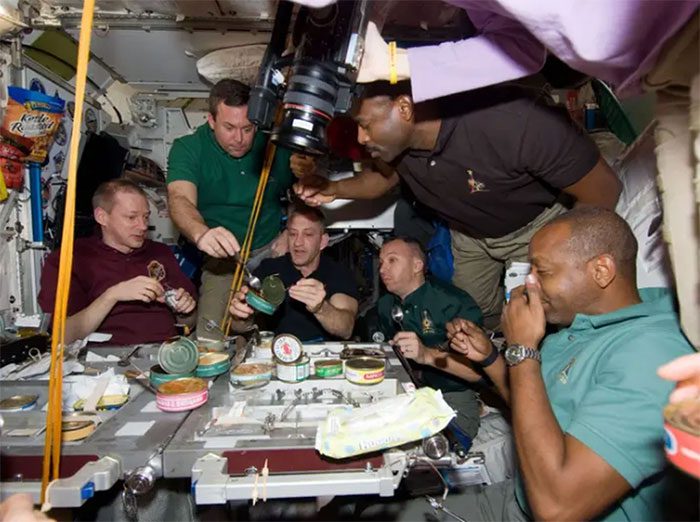
Astronaut Leland Melvin and the NASA STS-129 crew enjoying a meal in the kitchen aboard the International Space Station. (Photo: NASA).
Occasionally, astronauts have to stay on the ISS for months at a time. Therefore, food must always be fresh. Thermal stabilization is a method of preserving food using heat. Drying and freeze-drying are also effective ways to prevent food spoilage.
At the Space Food Systems Laboratory in Houston, NASA technicians freeze processed food at around -40°C. The food is then stored in a vacuum chamber, where heat turns ice into vapor. This chamber extracts as much water as possible.
Freeze-drying can inhibit bacterial growth and significantly lighten the food. This method also helps preserve nutrients and makes it easier to rehydrate the food.
To enhance preservation further, the food is also irradiated to kill bacteria.
Spicy Shrimp, Turkey Noodles, and Chocolate Cake
Due to the lack of gravity in space, the body takes some time to achieve gravitational balance. Instead of flowing down to the stomach, liquids can accumulate in the nasal cavity.
Retired astronaut Mike Massimino recalls: “your sense of taste is slightly diminished because you feel full.”
Many astronauts crave Tabasco sauce and various dishes without needing to smell them. Although Melvin did not lose his sense of taste, he particularly enjoys spicy shrimp. He mentioned that he finds this dish very tasty, along with turkey noodles and chocolate cake.
He also loves sharing food with astronauts from other countries, like eating canned crab from his Russian friends on the station or splitting a symbolic piece of bread during happy times. However, this is actually a type of bread that is prone to crumbs, so astronauts often eat corn tortillas instead.
The Right Dining Tools Make All the Difference
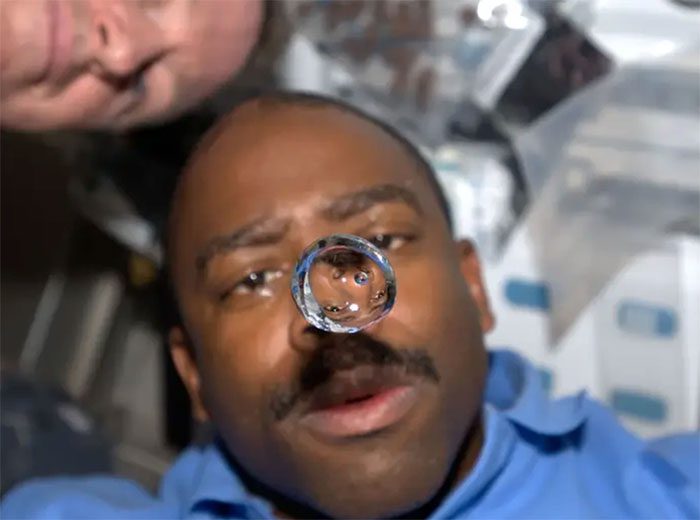
Astronaut Leland Melvin observing a floating water droplet in the Atlantis shuttle cockpit. (Photo: NASA).
In the absence of gravity, you need the right methods to keep food from floating away. Tape on food bags can attach the bags to trays and other surfaces.
In 2013, NASA released a video featuring astronaut Chris Hadfield tasting one of Melvin’s favorite foods, chocolate cake.
In that video, you can see all the essential dining tools needed for meals in space. Hadfield uses scissors to cut the food bag, holds a long-handled spoon to scoop out a piece of cake, and then brings it to his mouth. He eats the cake while drinking coffee at the same time. A straw with a valve can be opened and closed to prevent the coffee from spilling out between sips.
Sometimes astronauts also have fun with food. Melvin’s YouTube channel features a video where he tries to create water bubbles on the ISS. Astronaut Daniel Tani adds M&M candies to the bubble, and then Melvin sips the bubble with the candy inside.
Currently, NASA astronauts have about 200 different food bags to choose from. To prepare for commercial space tours, Michelin-starred chefs are also looking to diversify meals to better serve passengers.








































